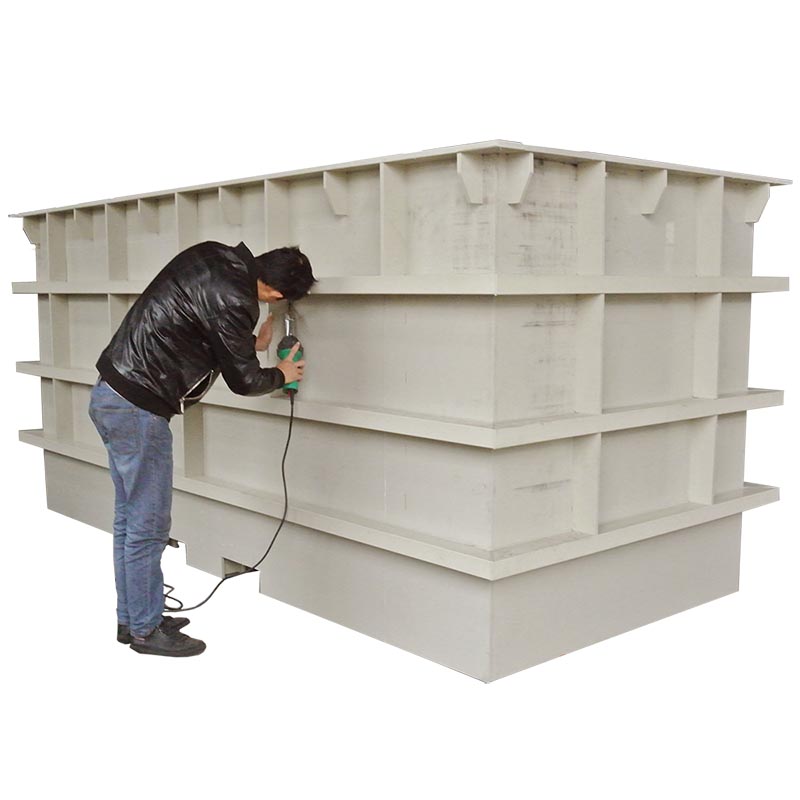
The pickling tank is a container used to hold the aqueous solution and remove the metal surface film during the pickling process of the workpiece. It has good alkali resistance, acid resistance, high temperature resistance and corrosion resistance. The pickling tank made of polypropylene material is a container used for chemical treatment to remove rust, oxide scale and other sundries on the surface of various metal parts. Alkali resistance, acid resistance, high temperature resistance, good corrosion resistance, can store various liquids.
Pickling tanks are generally made of materials with good anti-corrosion properties such as polypropylene and glass fiber reinforced plastics. There are professional CAD drawings for the production of pickling tank systems, which are processed according to the size and shape provided by the drawings. For example, in the production of polyacrylic acid washing tanks, it is necessary to engrave and process polypropylene sheets according to the drawings, and then obtain the shape of the pickling tank by assembling and welding polypropylene sheets. The wash tank can be reinforced by welding polypropylene sheets.

1. Acid resistance, alkali resistance and chemical corrosion resistance;
2. It is composed of degreaser, dissolution accelerator, high-efficiency corrosion inhibitor, fog inhibitor, etc., and it can be completed in one step for oil removal, rust removal, and scale removal;
3. The scale removal speed is fast, the efficiency is high, the corrosion to the metal matrix is small, and the corrosion inhibition rate is high;
4. No acid mist is generated during the cleaning operation, which greatly improves the production environment
Use:
Pickling tanks are widely used in metallurgy, electroplating and other industrial pickling industries:
1. It is used for pickling the surface of various copper and aluminum metals such as titanium-nickel alloy and stainless steel, and has the functions of degreasing and rust removal;
2. Promote the removal of stubborn oxide scale on the metal surface, especially the high temperature generated in the process of hot rolling, annealing, and tempering, which is difficult to remove oxide scale, and at the same time prevent the generation of hydrogen embrittlement;
3. Reduce the corrosion rate of the metal, multiply the service life of the acid solution, and finally make the surface of the product clean and form a uniform silver-white matt structure;